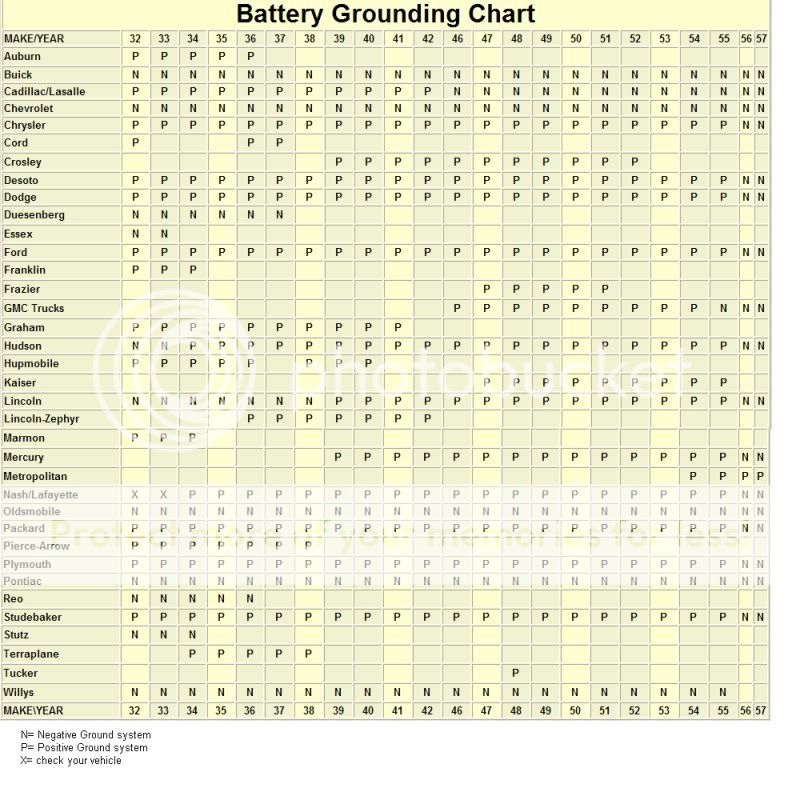(quoted from post at 10:18:18 01/26/10) What you do is pick the story that you like.
Here are a couple of takes: ( not ALL factual, just part)
1) Model T Ford had it right with Negative ground, then Ford "fixed" it with the Model A (Pos gnd), then Ford "fixed" it again in 1956 (back to Neg Gnd).
2) Ford was almost ready to go into production with the Model A & discovered that spark was positive...investigation revealed that the coil was manufactured wrong! Henry, being the frugal man that he was, said," take too much time & money to scrap/re-manufacturer all those coils...just reverse the battery cables". Finally fixed that mistake in 1956.
3) Had it wrong with Model T, fixed it with Model A, then made it wrong again in 1956.
4) Had it right with the Model T, messed it up with the Model A, couldn't admit mistake until all the guilty players were dead & then fixed it in 1956.
5) When lightening strikes, it is an electrical discharge from a Negative cloud to a Positive Earth, so if it was good enough for God, then it was good enough for machines. Of course the main current is in the return discharge from Earth to cloud…but the Earth is still the Positive end of it.
And FINALLY,
5) It doesn't make any difference, like left/right hand threads on lug nuts, as long as user knows how it is set up, either work just fine. It is just a convention necessary to facilitate communication.
As to it being a GM vs Ford thing, you can see GMC Positive ground for many years while Chevy, BOP were all Negative ground.



